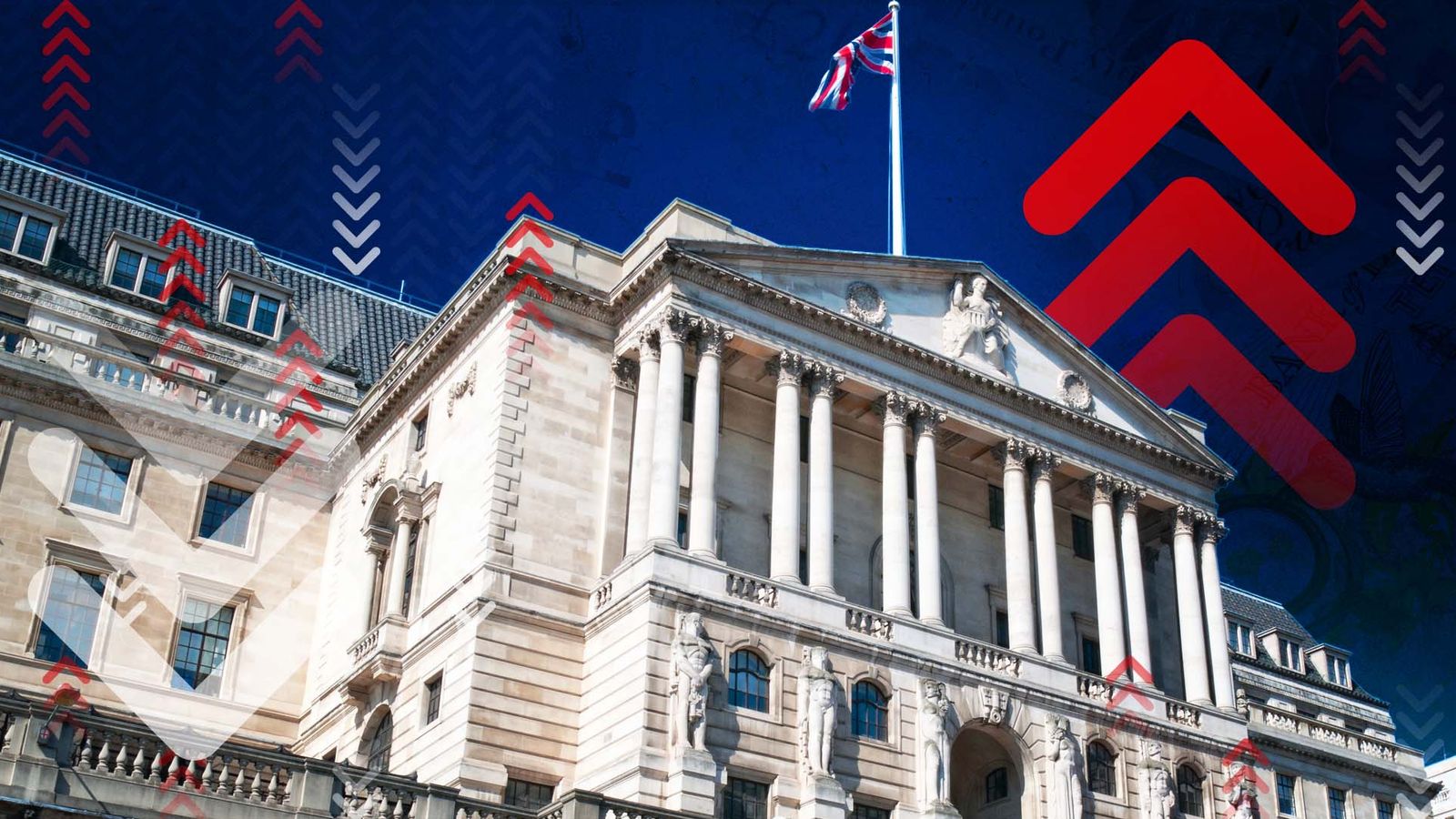The Bank of England has raised UK interest rates by a further half percentage point to 4%, but gave its clearest signal yet that borrowing costs may now be nearing their peak.
This was the Bank’s tenth successive interest rate increase, but in the accompanying documentation, it hinted that there is a chance it might be the last for the time being, saying that it would only raise rates further “if there were to be evidence of more persistent [inflationary] pressures” than in its forecasts.
Those forecasts suggest that inflation has now peaked, and that it will come down gradually this year and next, eventually dropping beneath the Bank’s 2% target.
The Bank also upgraded its forecast for the economy.
While it still projects a technical recession this year, it would be a very shallow recession, with overall growth falling by 0.5% in 2023, compared with its November forecast of a 1.5% fall.
Seven members of the nine-person Monetary Policy Committee supported the half percentage point increase, but two members – Swati Dhingra and Silvana Tenreyro – voted to leave borrowing costs on hold.
All told, while the increase today is significant, the hints included in the Bank’s minutes represent a marked change in tone.
Mortgage approvals at lowest level since early months of pandemic
Bank of England’s unprecedented bond market intervention yields £3.8bn profit
Potential for UK to experience persistent inflation, Bank of England chief economist says
Previously it had said that it was ready to respond “forcefully” to higher inflation; this time, that language was removed.
Previously it had said further rate increases might be required if the economy behaved in line with their forecasts; this time it indicated that rate increases were dependent on higher inflation than in its forecasts.
The shifts in language leave the door open for some small further increases in borrowing costs but provide the firmest signal yet that UK interest rates are now at or close to their peak.
Still, while the outlook for the UK economy is better than in the Bank’s previous forecasts, it is nonetheless far weaker than in recent years.
While the average UK growth rate pre-financial crisis was around 2.5% and around 1.5% post-pandemic, the Bank expects underlying growth of just 0.7% in the coming years.
Moreover, because of the fall in national income projected this year, it now expects that the size of the economy will still be at 2019 levels in 2026 – a full seven years of lost growth.
Many other countries around the world have already exceeded their post-pandemic level; the UK, according to the Bank’s figures, is set to languish below it until the second half of this decade.
A spokesperson for the prime minister commented on the figures: “Inflation is biggest threat to living standards in a generation, we support the bank’s action today. We will continue to take the decisions needed to reduce inflation.”
“This is a difficult time for mortgage holders in the UK. Inflation falling is not a given, it requires govt to stick to the difficult decisions it has taken.”






















